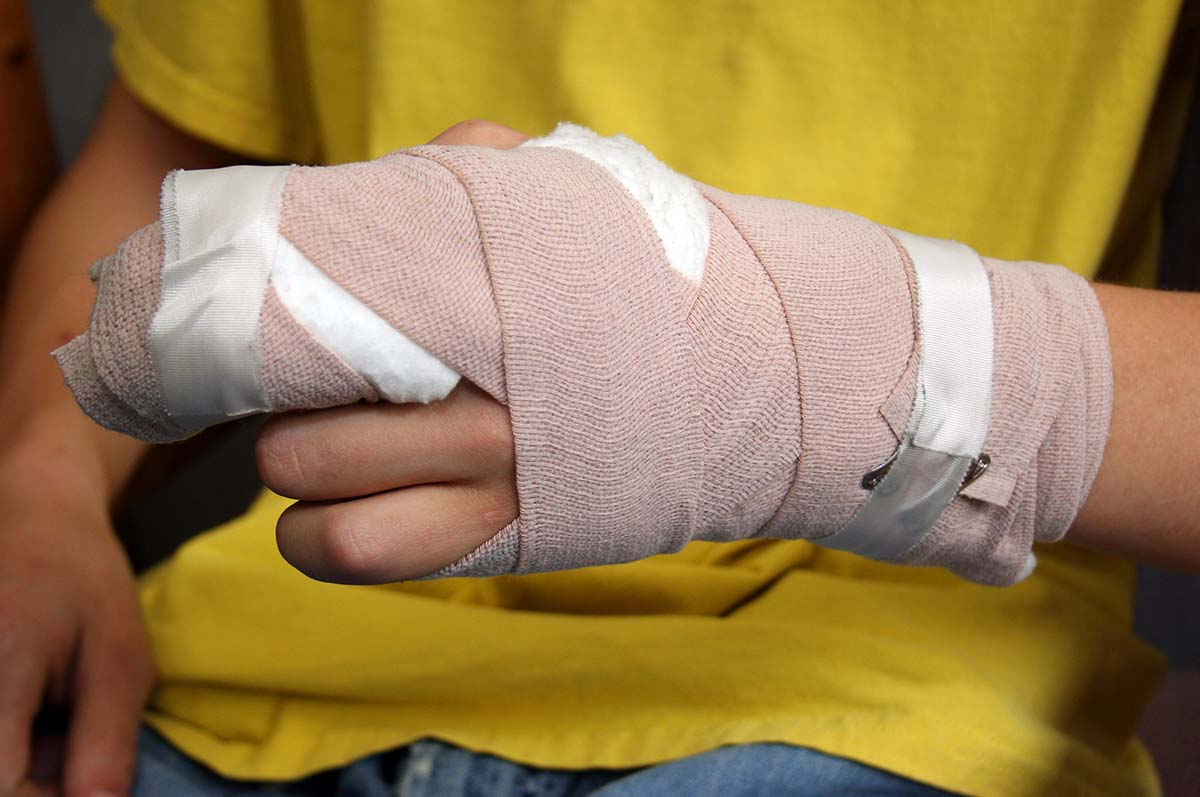Be careful with the snowblower: What to do if you injure your hand

Not only does winter bring its share of ice and snow, but it also results in a large uptick in hand and wrist injuries due to slips, falls and snowblower accidents.
“Wrist fractures are extremely common in the winter months,” says James Willcockson, MD, a Nebraska Medicine plastic surgeon specializing in hand and wrist injuries. “In fact, studies show it is the most common fracture in adults anywhere in the body.”
Heavy, wet snowfalls also tend to lead to snowblower injuries to the fingers and hands. “What typically happens,” explains Dr. Willcockson, “is that the heavy snow will clog up the blades. People may then use their hands to unclog the blades, forgetting that the snowblower is still on. As soon as the blades are unclogged, the blades start spinning again, resulting in lacerations, fractures and even loss of fingertips or fingers.”
To prevent snowblower injuries, always turn off the snowblower and unlock the clutch before attempting to unclog snow from the blades, advises Dr. Willcockson. Many blowers now come with a small shovel to unclog the blades. If not available, use a stick or broom handle. But still, remember to turn the blower off first. You can also spray the blades and chute with a lubricant to help prevent clogging.
When to go to the ER
Anytime you have a hand or wrist injury accompanied by extreme tenderness or a deformity, you should go to the emergency room or an immediate care clinic, advises Dr. Willcockson. If it is a severe injury or fracture, Nebraska Medicine emergency departments have hand and wrist surgeons on call who can come in to see you during your visit. If the injury does not appear emergent, they may treat the injuries and schedule a follow-up visit with a hand and wrist specialist.
“I always recommend following up with a hand and wrist specialist the next day or same week, if possible,” says Dr. Willcockson. “Having the correct function of hands and wrists is very important for everyday tasks. The fingers, hands and wrists involve very complicated anatomy. As specialists, we are very familiar with this anatomy. We will carefully assess your injuries and determine if you need surgery to ensure maximum function and the best outcome. If your injury is not treated properly, you could end up with a deformity and loss of range of motion in the fingers, hands and wrists, as well as other possible long-term issues.
"For example, damaged nerves that aren’t repaired correctly can result in loss of sensation in the fingers or hand, leading to other issues. Torn tendons that are not treated properly will not heal and can become a chronic problem. If fractures are not treated appropriately, they can heal in the wrong position, which may cause pain as well as decrease range of motion and function. In severe cases, it may even cause carpal tunnel."
Depending on the extent of your injury, healing could take anywhere from four weeks to a year or more, says Dr. Willcockson. Fractures generally take four to six weeks to heal; tendons take eight to 12 weeks; damaged nerves grow even more slowly and can take up to a year or more to heal.
What to do immediately after a snowblower injury
If you have suffered a snowblower injury to your hands or fingers, gently wrap the hand in a towel or T-shirt and apply light pressure.
“Do not create a tourniquet to the wrist and hand,” advises Dr. Willcockson. “This area generally clots fairly quickly on its own. Applying a tourniquet may hinder the ability to perform surgery, if needed, due to altered blood flow. A tourniquet may be required in surgery but can only be used to the same area for up to two hours.”
If fingers or fingertips have been lost, put these parts in a sealed plastic bag, set on ice and bring them to the emergency department.
Wrist fracture may be sign of osteoporosis
Wrist fractures during the winter are very common among the elderly, especially women, notes Dr. Willcockson. “A wrist fracture is often the first warning sign you may have osteoporosis (thinning of the bones),” he says. “If nothing is done, the next fall may result in a hip fracture, which can be life-threatening.”
If you have suffered a wrist fracture or are over 60 years old, talk to your doctor about getting a DEXA scan to measure your bone density, recommends Dr. Willcockson. “A DEXA scan is recommended at age 65, but you may want to get one sooner, depending on your risk factors. If it is determined you have osteoporosis, you can start treatment to help slow or halt further bone loss and even strengthen current bones.”
“The bottom line is injuries to the fingers, wrists and hands should be treated seriously. We depend on the use of our hands, fingers and wrists daily, so we want them to heal properly, so they maintain the most function and mobility.”
Don’t delay. Visit one of our emergency rooms for severe injury. Call 800.922.0000 to schedule an appointment with one of our hand and wrist specialists. Schedule online for non-emergent hand and wrist pain.







